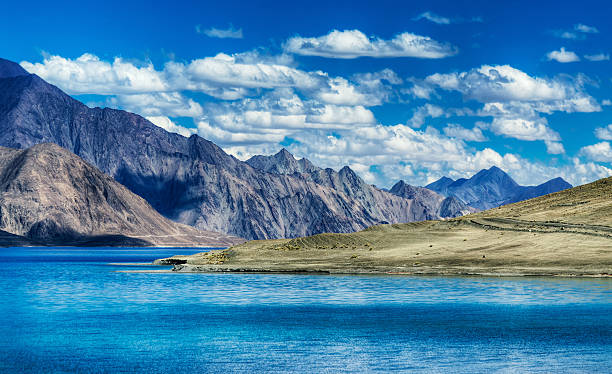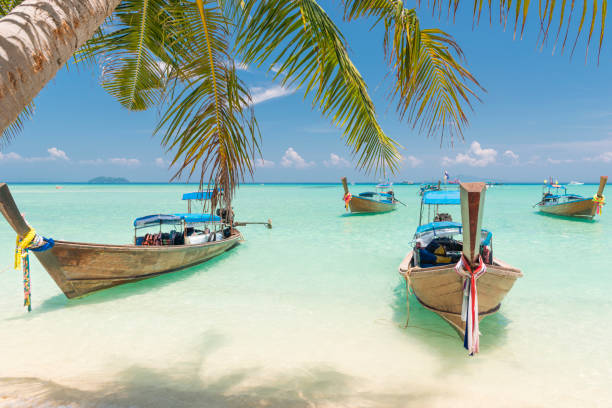The Ice Stupa Project: An Innovative Solution for Leh and Ladakh’s Water Crisis

The rugged terrains of Ladakh, often known as the ‘Land of High Passes,’ hides an innovation that’s both mesmerizing and brilliantly practical. The Ice Stupa Project. This initiative has reimagined a traditional Ladakhi practice for the contemporary water challenges the region faces for Leh Ladakh tour packages.
Tracing Back to Ladakh’s Ancestral Ingenuity
The idea of artificial glaciers isn’t a recent eureka moment. Ladakh’s ancestors knew the art of ‘grafting glaciers’ in the higher reaches of the mountains, harnessing the winter stream water that would otherwise waste away, and preserving it for the springtime – just when the fields demand nurturing.
Fast forward to our times, Mr. Norphel, a seasoned engineer, rejuvenated this concept, focusing on horizontal ice formation. But, these required very high altitudes (above 4,000m), consistent maintenance, and specific geographic settings like a north-facing valley.
Spotting these limitations, Sonam Wangchuk introduced a revolutionary approach, making the creation of these glaciers more adaptable and low-maintenance.
Redefining the Artificial Glacier: The Ice Stupa Model
Inspired by the sacred Ladakhi mud structures, Stupa or Chorten, the new model envisions vertically frozen water, forming imposing ice towers or cones. These can stand tall at 30 to 50m, positioned conveniently close to villages, drastically reducing the water transportation efforts.
How are these achieved? Through a simple method that demands minimal investment: An underground pipeline channels water from higher stream points, covering distances of about one to three kilometers, harnessing gravity to facilitate the flow.
A Peek into the Mechanics
The concept operates on a straightforward principle familiar to us: water finds its level. When water from an upstream source, say 60m high, is channeled to a village, it naturally rises close to its original height. Visualize this process as water being projected from a tower, plummeting in the freezing Ladakhi winter nights of -30 to -50°C. By the time this water touches the ground, it’s frozen, gradually shaping into an impressive Ice Stupa.
In actuality, the construction is even more straightforward. The initial water flow forms a frozen base, and subsequent flows continue to freeze atop this base, increasing the stupa’s height until it nearly matches the source’s altitude.
Preservation and Utility
But why go through all this trouble? The goal is to sustain this ice tower deep into the summer months. As it gradually melts, it irrigates the fields, bridging the gap until the actual glacial melt waters commence their flow in June. And due to its vertical orientation, an Ice Stupa, despite its colossal size, receives minimal sunlight. Consequently, its melting rate is slower than a similarly volume horizontal glacier.
A Boon for Tourism: Making Your Journey Matter
For travelers keen on making a difference, opting for Leh Ladakh tour packages that support the Ice Stupa Project can be a game-changer. By doing so:
- Educational Visits: Many packages offer a detailed tour of the Ice Stupa sites, shedding light on the science and innovation behind these frosty wonders.
- Sustainable Tourism: A trip to Leh Ladakh is no longer just about sightseeing. It’s about understanding, appreciating, and contributing to local efforts in battling global challenges.
The Broader Impact: Beyond Just Water
The Ice Stupa Project doesn’t just stop at providing water. Its ripple effects are manifold:
- Local Employment: The project has created job opportunities for locals, ensuring they benefit directly from tourism and conservation initiatives.
- Eco-Friendly Schools: Funds generated are being utilized to develop eco-friendly schools, emphasizing both education and sustainability in the region.
- Inspiring Innovation: The success of the Ice Stupa Project has become a beacon of hope and inspiration for other regions facing similar crises.
Planning Your Trip: Making Every Drop Count
If you’re mulling over a trip to Leh Ladakh, consider integrating a visit to the Ice Stupas. Here’s why:
- A Fresh Perspective: Move over regular sightseeing! Delving into the heart of local innovations will offer a fresh and enriching perspective on your travels.
- Support Local Initiatives: By choosing Leh Ladakh tour packages that tie-up with the Ice Stupa Project. You’re directly supporting the community’s sustainable endeavors.
- An Unforgettable Experience: Trust me on this one; watching these towering ice pyramids melt and nourish. The arid landscapes is a sight you won’t forget in a hurry.
Where Innovation Meets Inspiration
The Ice Stupa Project is a testament to human ingenuity and resilience. As the world grapples with the consequences of climate change, such endeavors offer a glimmer of hope and a way forward.
So, the next time you’re planning that dream trip to Leh Ladakh, remember the Ice Stupas. And as you marvel at the majestic landscapes, take a moment to appreciate the silent ice sentinels guarding the future of this beautiful region. They stand tall, not just as structures of ice and innovation, but as symbols of a community’s undying spirit and determination.
In Conclusion: Celebrating Ladakh’s Sustainable Innovations
The Ice Stupa Project symbolizes Ladakh’s enduring spirit and adaptability. It’s a nod to the past, a solution for the present, and a beacon of hope for the future. So, as you ponder over Leh Ladakh tour packages for your next adventure, remember to tip your hat to these frozen marvels, the epitome of human ingenuity meeting nature’s challenge.
Frequently Asked Questions (FAQs)
-
What is the primary objective of the Ice Stupa Project?
The Ice Stupa Project aims to address the water scarcity in Leh and Ladakh by storing winter stream water in the form of large ice structures. These melt in the spring, providing essential water for irrigation when it’s most needed.
-
How is the Ice Stupa different from traditional artificial glaciers in Ladakh?
Traditional artificial glaciers, revived by Mr. Norphel, are horizontally formed and require specific conditions such as high altitudes and north-facing valleys. Ice Stupas, on the other hand, are vertically constructed and can be built near villages, eliminating the need for specific geographic settings and reducing maintenance efforts.
-
Why are Ice Stupas shaped vertically?
Ice Stupas are vertical to minimize exposure to the sun. Due to their vertical orientation, these structures receive fewer sun rays per volume, making them melt slower compared to horizontal artificial glaciers.
-
How is water sourced for building an Ice Stupa?
Water is sourced from higher points of streams, channeled via underground pipelines. The natural gradient facilitates the flow, and as the water is exposed to freezing temperatures, it turns into ice, forming the Ice Stupa.
-
Is the Ice Stupa Project environmentally sustainable?
Absolutely! The project uses natural winter streams, doesn’t require pumps or external power, and aids in conserving water. Furthermore, it boosts local agriculture by providing water in the crucial spring sowing season.
-
Can tourists visit the Ice Stupa sites when traveling to Leh and Ladakh?
Yes, many Leh Ladakh tour packages include visits to the Ice Stupa sites, allowing tourists to witness and understand this innovative approach to water conservation.
-
How do local communities benefit from the Ice Stupa Project?
Beyond the obvious benefit of water availability, the project creates local employment opportunities, promotes sustainable tourism. And generates funds for eco-friendly initiatives, including the construction of green schools in the region.




